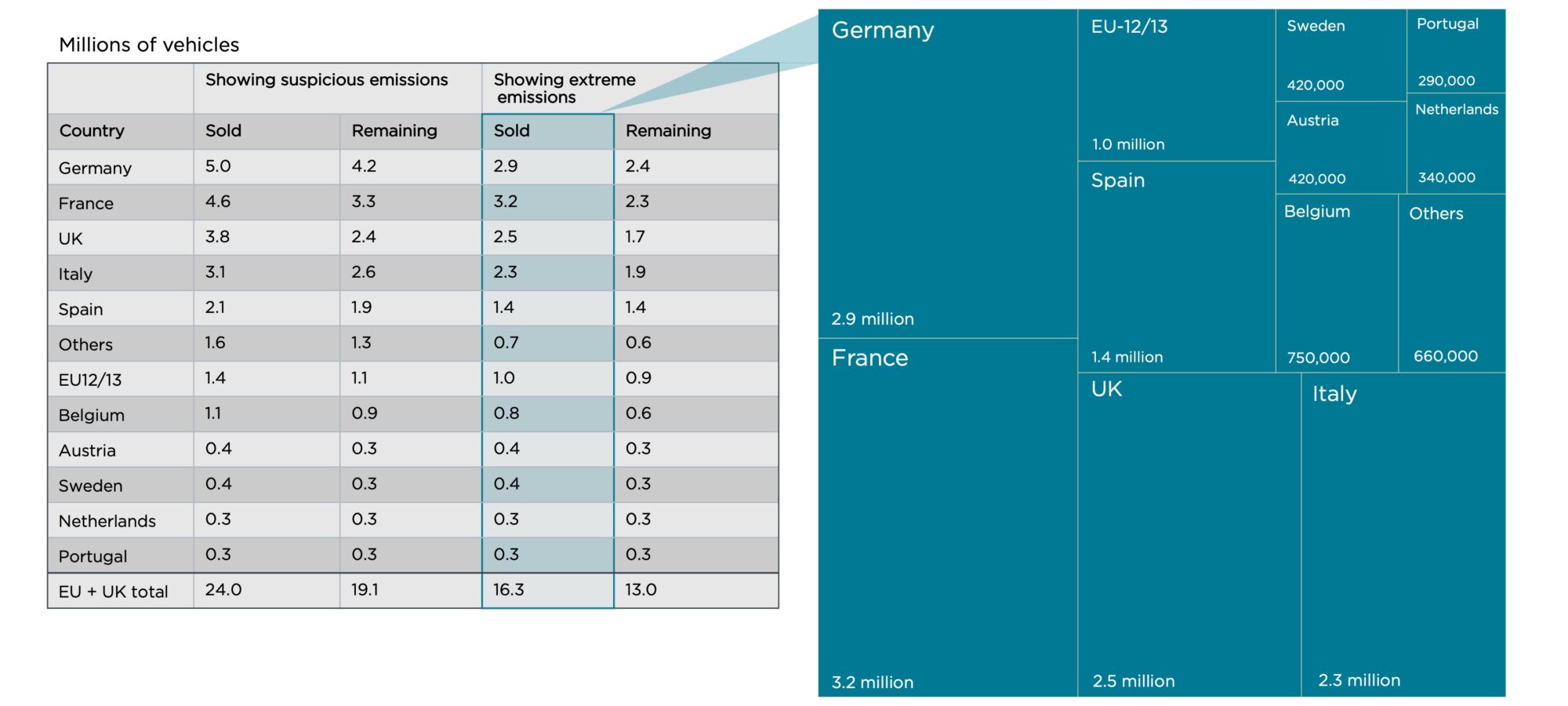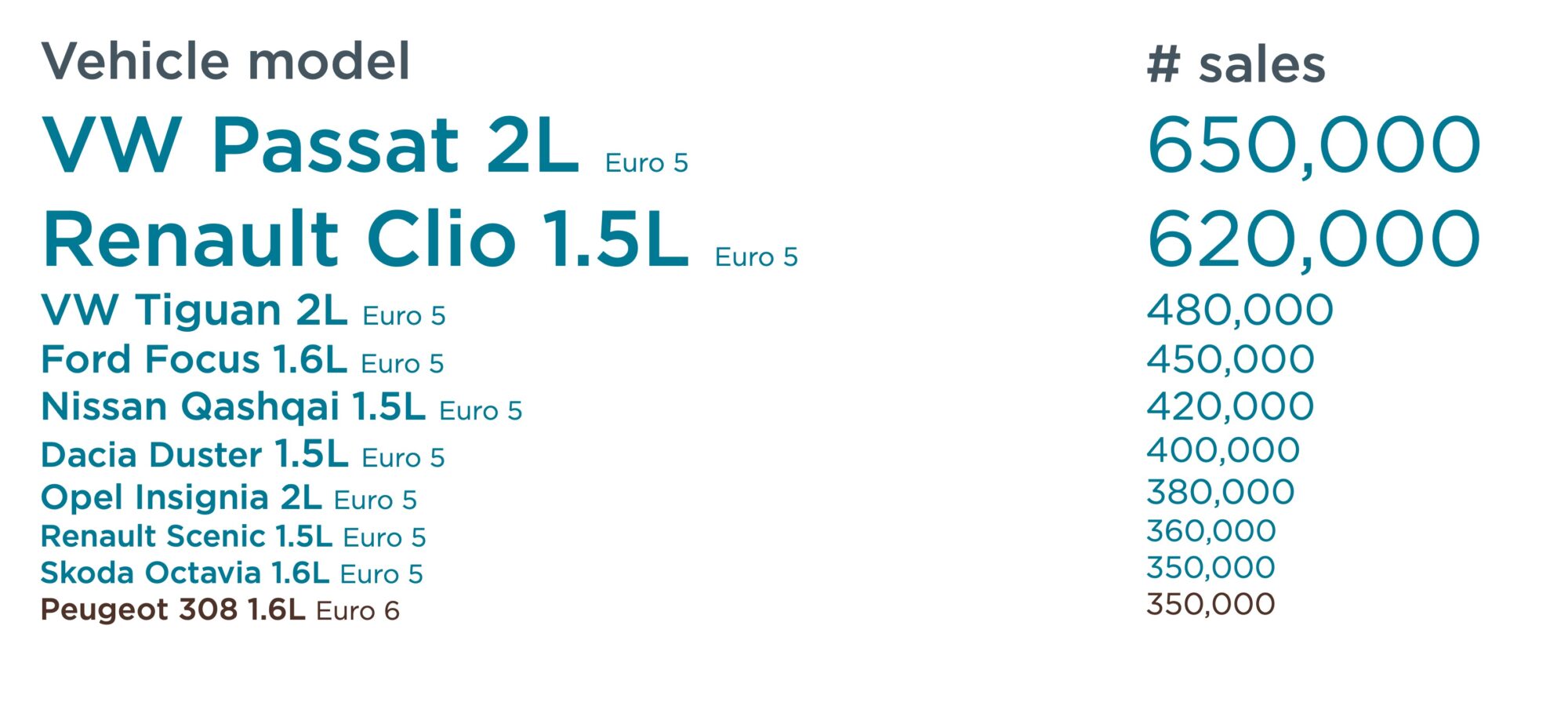Blog
It’s time for Europe to address diesel defeat devices once and for all
Over seven years have passed since the “Dieselgate” scandal first broke, revealing the widespread use of defeat devices, or calibration strategies intended disable or reduce the efficiency of emission control systems, in diesel vehicles. Substantial evidence has shown that diesel cars across manufacturers emit high levels of nitrogen oxides (NOx) during real-world operation. Yet, due to limited corrective action, these vehicles continue to operate across Europe today, harming the health of all who are exposed to the air pollution these emissions create.
In 2016, the ICCT’s John German wrote how the use of defeat devices extends beyond Volkswagen, concluding that EU regulations need to establish a clear and explicit definition of defeat devices to fully address the issue. Recently, the Court Justice of the European Union (CJEU) did just that, clarifying in four rulings what constitutes a prohibited defeat device. Many of these prohibited strategies were common among diesel car manufacturers before the Real Driving Emissions (RDE) testing procedure was introduced, offering grounds for reinvestigating diesel cars showing high NOx emissions.
A new ICCT report reassesses emissions testing results to estimate the prevalence of prohibited defeat devices in pre-RDE diesel cars sold from 2009 to 2019 in Europe, looking at data from official government laboratory and real-world testing, independent testing, and an extensive database of remote sensing measurements. The analysis found that “suspicious” levels of NOx emissions were shown in at least 77% of official government tests and in up to 100% of vehicles in independent testing and remote sensing data, indicating the likely use of a prohibited defeat device. Of the 219 unique vehicle models tested, 209 showed suspicious emissions in at least one test. Over two thirds of the vehicle models tested showed “extreme” emissions, indicating that a defeat device is almost certainly present.
Over 200 unique vehicle models showing evidence of the likely use of a prohibited defeat device is a lot, but what does this mean in terms of the numbers of vehicles sold and those still operating today? Using market statistics compiled by the ICCT, we estimate in total, approximately 53 million diesel cars certified to the Euro 5 and pre-RDE Euro 6 standards were sold in the EU and UK. Using a conservative estimate and considering only the vehicles tested by official government authorities, approximately 24 million diesel cars sold show suspicious emissions – of these, 16.3 million diesel cars sold show extreme emissions. The breakdown by country is shown below in Figure 1. These numbers would be higher if government authorities widened their testing to investigate more vehicle models, such as the 60 additional vehicle models showing suspicious emissions in independent testing and remote sensing.
A large majority of these vehicles are still driven today. Using methods from ICCT’s ROADMAP model to determine likely fleet turnover, we estimate that 19.1 million vehicles showing suspicious emissions are currently in use – of these, 13.0 million vehicles show extreme emissions.

Figure 1. Total number of sold and remaining diesel Euro 5 and pre-RDE Euro 6 cars showing suspicious and extreme emissions by EU member state + UK
Our review shows that the issue of high NOx emissions is prevalent across manufacturers, as illustrated in Figure 2 below. As the largest manufacturer of diesel cars in Europe, Volkswagen Group produced the largest number of vehicles showings suspicious emissions. However, several other manufacturers sold millions of vehicles showing suspicious and extreme emissions. For example, Renault-Nissan sold over 4 million vehicles showing extreme emissions. As a percentage of total sales, nearly all manufacturer groups sold higher shares of vehicles showing extreme emissions compared to Volkswagen Group.

Figure 2. Total sales of diesel Euro 5 and pre-RDE Euro 6 cars showing suspicious and extreme emissions by manufacturer group, 2009-2019
The top ten most popular vehicle models that show extreme emissions in official government testing collectively account for approximately 4.5 million sales (Figure 3). Nearly all of these models also show extreme emissions in independent real-world testing or remote sensing. Three of the top ten models showing extreme emissions are manufactured by Volkswagen Group and use EA189 engines, which were subject to mandatory software updates but still showed emissions well above the regulatory limit after the recalls.

Figure 3. Top diesel Euro 5 and pre-RDE Euro 6 passenger car models, 2009-2019, showing extreme emissions and their total sales in the EU-27 and UK
Evidence began to illuminate the issue of high diesel NOx emissions during real-world driving over eight years ago, and this reassessment of emissions data helps show even more clearly just how widespread the likely use of prohibited defeat devices is. Although corrective action has been limited to date, there have been important responses to the evidence showing widespread excess NOx emissions from diesel cars. The recently announced Euro 7 regulation introduces more comprehensive testing requirements, which will help improve the enforcement of real-world emissions. At a city level, low-emission zones have been implemented across Europe to address air quality by targeting diesel cars and other high-emitting vehicle groups.
But these measures alone cannot clean up the tens of millions of diesel cars that continue to emit NOx emissions several times above the legal limit. Now that the CJEU rulings have removed a huge barrier to defeat device enforcement, it’s time for EU member states and the UK to fully address the issue of excess NOx from diesel cars.
